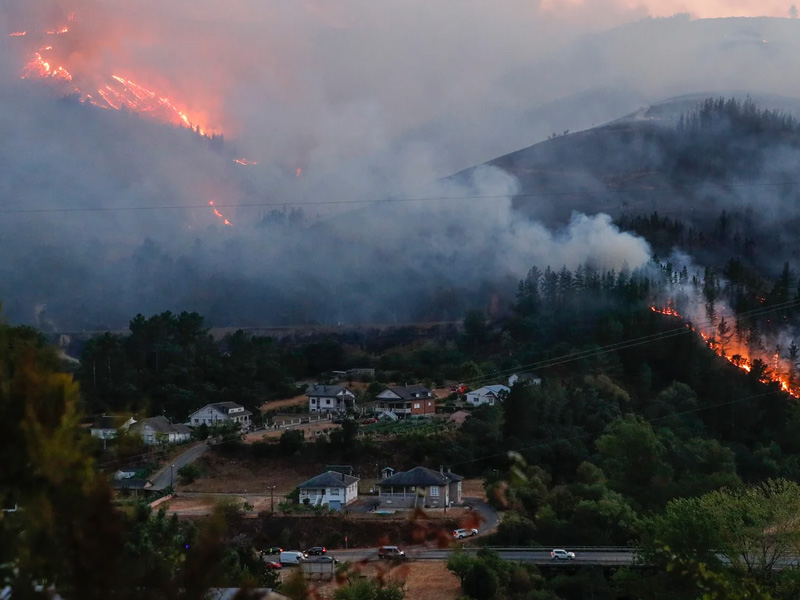
Spain’s devastating summer wildfires have intensified calls for urgent reforms in forest management, as experts warn that hotter, drier conditions will continue to fuel destruction unless prevention strategies are prioritised.
Residents in Galicia recall traditional methods such as burning undergrowth during winter to create natural fire breaks. Javier Fernandez Perez, a 72-year-old from Parafita, said neglecting these practices leaves vegetation to feed uncontrollable blazes. “If nothing is done to prevent fires, this will happen again in about six years’ time,” he said.
Southern Galicia became the epicentre of Spain’s worst fire season in three decades. During August’s record heatwave, wildfires killed four people, ravaged towns, and scorched 330,000 hectares of land, twice the size of London. Just weeks ago, another blaze destroyed 19,000 hectares around Fernandez Perez’s hamlet.
Forestry experts say underfunding prevention efforts over the past 20 years made fires far harder to contain. “What we are seeing in Spain is a trial for what Europe can expect,” said Victor Resco, forestry engineering professor at the University of Lleida, warning that central and northern Europe could face similar crises within decades.
Prime Minister Pedro Sanchez admitted in August that prevention had been “clearly insufficient” and vowed to do “whatever it takes” to prevent a repeat.
Spain has the third-largest forest cover in Europe after Sweden and Finland, with 18.6 million hectares growing 2.2% annually, far above the European average. But rural depopulation has left fewer people to manage this growth, forcing authorities to take on tasks once handled by local communities.
The combination of expanding forests, disrupted weather patterns, and dwindling rural populations has left vast stretches of natural kindling vulnerable to increasingly destructive heatwaves and droughts.
Faridah Abdulkadiri


